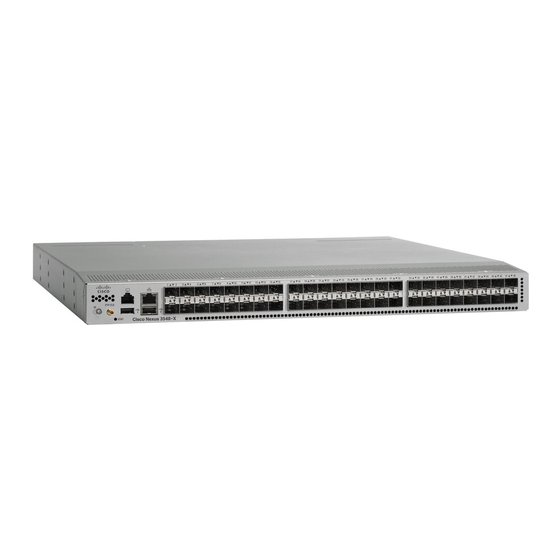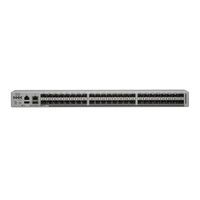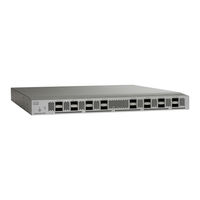
Cisco Nexus 3548 series Manuals
Manuals and User Guides for Cisco Nexus 3548 series. We have 6 Cisco Nexus 3548 series manuals available for free PDF download: Command Reference Manual, Configuration Manual, Installation Manual
Cisco Nexus 3548 series Command Reference Manual (556 pages)
NX-OS Unicast Routing Command Reference
Table of Contents
-
-
-
Examples62
-
Clear Bgp76
-
Clear Ip Arp89
-
Clear Ip Bgp91
-
-
Clear Ip Route112
-
Clear Ip Traffic113
-
Clear Vrrp115
-
Confederation117
-
Dampening (BGP)118
-
Delay Minimum133
-
Delay134
-
Distance (EIGRP)135
-
Distance (OSPF)137
-
Distance (RIP)138
-
Ebgp-Multihop139
-
Eigrp Router-ID142
-
Eigrp Stub143
-
Feature Bgp145
-
Feature Eigrp146
-
Feature Hsrp147
-
Hsrp Group147
-
Feature Ospf148
-
Feature Rip149
-
Feature Vrrp150
-
-
Hsrp159
-
Hsrp Delay160
-
Ip (HSRP)162
-
Ip Address164
-
Ip Arp166
-
Ip Arp Timeout170
-
Ip Delay Eigrp181
-
Ip Ospf Cost200
-
Ip Ospf Network206
-
Ip Ospf Priority208
-
Ip Ospf Shutdown210
-
Ip Prefix-List214
-
Ip Proxy-Arp217
-
Ip Route226
-
Ip Router Eigrp228
-
Ip Router Rip231
-
Ip Unreachables236
-
Mac-List241
-
Match As-Number243
-
Match As-Path245
-
Match Community247
-
Match Interface251
-
Match Ip Address253
-
Match Metric261
-
Match Mac-List263
-
Match Route-Type265
-
Match Tag267
-
Match Vlan269
-
Maxas-Limit273
-
Metric Weights283
-
Neighbor285
-
Network288
-
Next-Hop-Self291
-
No Switchport293
-
Object294
-
Password (BGP)296
-
Preempt (HSRP)304
-
Preempt (VRRP)306
-
Priority (HSRP)308
-
Priority (VRRP)310
-
Remote-As325
-
Restart Bgp326
-
Restart Eigrp327
-
Restart Ospf328
-
Restart Rip329
-
Route-Map332
-
Router Bgp336
-
Router Eigrp338
-
Router Ospf339
-
Router Rip340
-
Router-ID (OSPF)342
-
Send-Community344
-
Set As-Path345
-
Set Community349
-
Set Dampening351
-
Set Extcommunity353
-
Set Level360
-
-
Set Metric364
-
Set Metric-Type366
-
Set Origin368
-
Set Tag371
-
Set Weight373
-
Shutdown (BGP)375
-
Shutdown (EIGRP)376
-
Shutdown (OSPF)377
-
Shutdown (VRRP)378
-
Stub380
-
Template (BGP)385
-
Threshold Weight392
-
Timers Basic395
-
Track (VRRP)408
-
Track Interface409
-
Track Ip Route413
-
Track List414
Advertisement
Cisco Nexus 3548 series Configuration Manual (230 pages)
NX-OS System Management, Release 7.x
Table of Contents
-
Preface
13 -
C H a P T E
15 -
-
PTP Process23
-
-
-
-
-
-
-
Configuring SNMP110
-
Disabling SNMP120
-
C H a P T E
123 -
Configuring RMON
124 -
C H a P T E
133 -
-
-
Event Statements134
-
Cisco Nexus 3548 series Configuration Manual (220 pages)
NX-OS System Management
Table of Contents
-
Preface
13 -
C H a P T E
17 -
Overview
19 -
-
PTP Process25
-
-
-
-
-
-
C H a P T E
99 -
-
C H a P T E
129 -
Configuring DNS
129
Advertisement
Cisco Nexus 3548 series Command Reference Manual (247 pages)
NX-OS System Management
Table of Contents
-
Action Cli14
-
Feature Ptp61
-
Ntp Abort103
-
Ntp Authenticate104
-
Ntp Commit105
-
Ntp Distribute106
-
Ntp Sync-Retry107
-
Ptp Announce112
-
Ptp Domain116
-
Ptp Priority1117
-
Ptp Priority2118
-
Ptp Source119
-
Rmon Alarm125
-
Rmon Event127
-
Rmon Hcalarm129
-
Show Callhome135
-
Multicast Mode145
-
Show Hosts148
Cisco Nexus 3548 series Configuration Manual (138 pages)
NX-OS Interfaces Release 9x
Table of Contents
-
Preface
9 -
Chapter 1
11 -
-
-
-
-
-
Vpc Overview67
-
Terminology68
-
-
Vpc Domain68
-
Vpc Number75
-
-
Vpc and LACP75
-
Cfsoe76
-
-
-
Cisco Nexus 3548 series Installation Manual (112 pages)
Table of Contents
-
Preface
7 -
-
Table
39 -
Part Number
41-
Qsfp-40G-Sr441
-
-
Figure43
-





